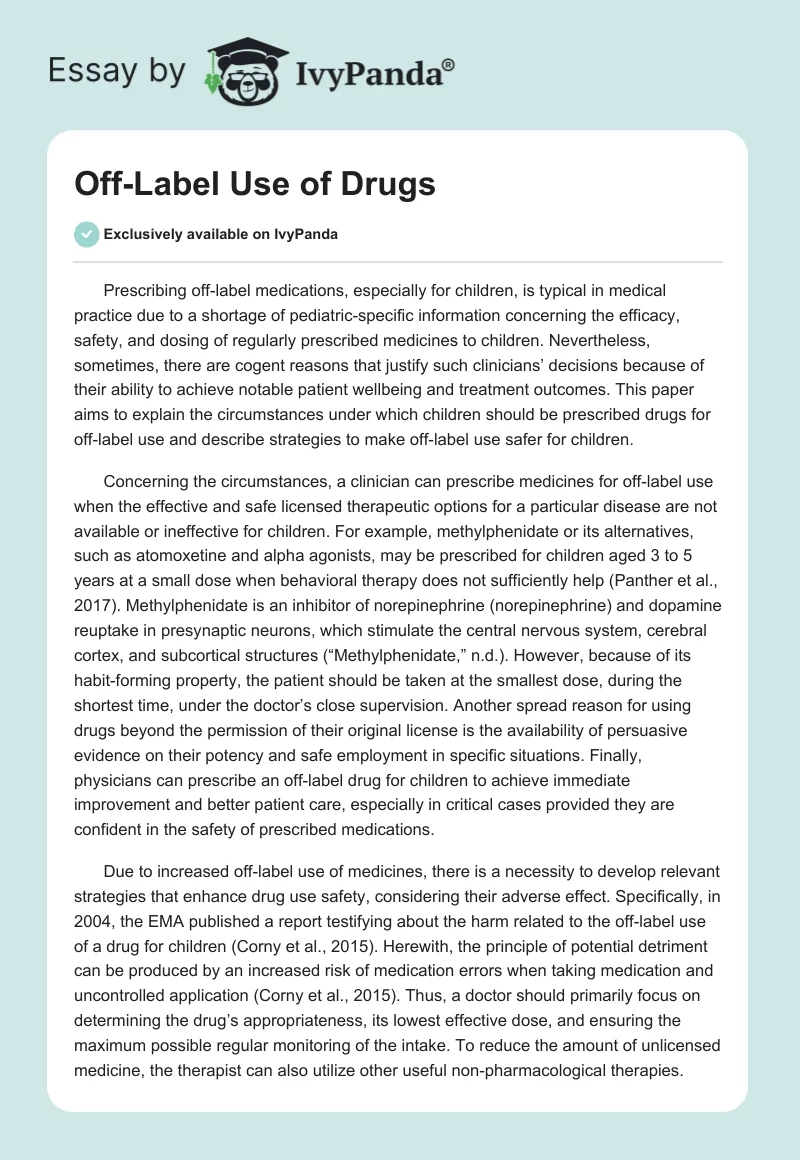Prescribing off-label medications, especially for children, is typical in medical practice due to a shortage of pediatric-specific information concerning the efficacy, safety, and dosing of regularly prescribed medicines to children. Nevertheless, sometimes, there are cogent reasons that justify such clinicians’ decisions because of their ability to achieve notable patient wellbeing and treatment outcomes. This paper aims to explain the circumstances under which children should be prescribed drugs for off-label use and describe strategies to make off-label use safer for children.
Concerning the circumstances, a clinician can prescribe medicines for off-label use when the effective and safe licensed therapeutic options for a particular disease are not available or ineffective for children. For example, methylphenidate or its alternatives, such as atomoxetine and alpha agonists, may be prescribed for children aged 3 to 5 years at a small dose when behavioral therapy does not sufficiently help (Panther et al., 2017). Methylphenidate is an inhibitor of norepinephrine (norepinephrine) and dopamine reuptake in presynaptic neurons, which stimulate the central nervous system, cerebral cortex, and subcortical structures (“Methylphenidate,” n.d.). However, because of its habit-forming property, the patient should be taken at the smallest dose, during the shortest time, under the doctor’s close supervision. Another spread reason for using drugs beyond the permission of their original license is the availability of persuasive evidence on their potency and safe employment in specific situations. Finally, physicians can prescribe an off-label drug for children to achieve immediate improvement and better patient care, especially in critical cases provided they are confident in the safety of prescribed medications.
Due to increased off-label use of medicines, there is a necessity to develop relevant strategies that enhance drug use safety, considering their adverse effect. Specifically, in 2004, the EMA published a report testifying about the harm related to the off-label use of a drug for children (Corny et al., 2015). Herewith, the principle of potential detriment can be produced by an increased risk of medication errors when taking medication and uncontrolled application (Corny et al., 2015). Thus, a doctor should primarily focus on determining the drug’s appropriateness, its lowest effective dose, and ensuring the maximum possible regular monitoring of the intake. To reduce the amount of unlicensed medicine, the therapist can also utilize other useful non-pharmacological therapies. Finally, clinicians must learn about the side effects of a particular medication in detail and find ways to mitigate them.
References
Corny, J., Lebel, D., Bailey, B., & Bussières, J. F. (2015). Unlicensed and off-label drug use in children before and after pediatric governmental initiatives. The Journal of Pediatric Pharmacology and Therapeutics, 20(4), 316-328.
Methylphenidate. (n.d.). MedlinePlus.
Panther, S. G., Knotts, A. M., Odom-Maryon, T., Daratha, K., Woo, T., & Klein, T. A. (2017). Off-label prescribing trends for ADHD medications in very young children. The Journal of Pediatric Pharmacology and Therapeutics, 22(6), 423-429.



